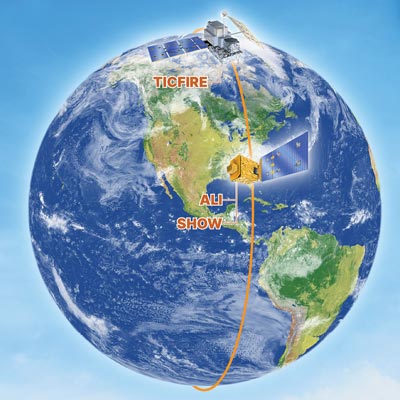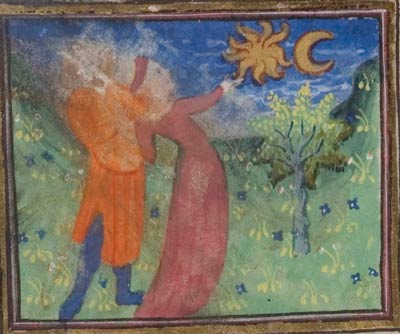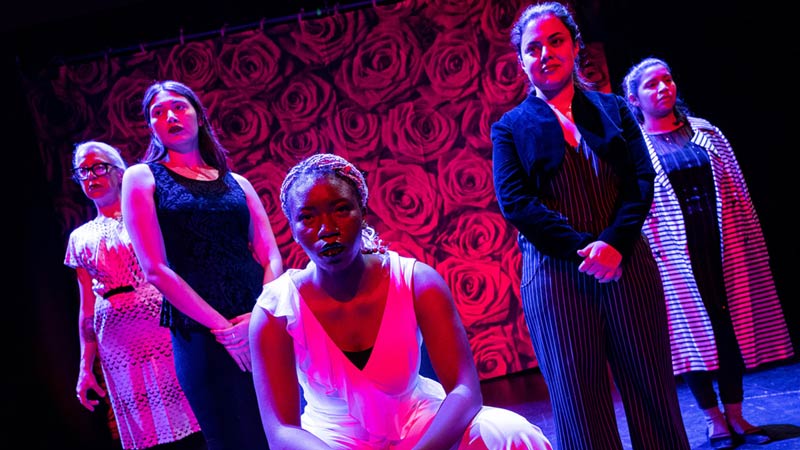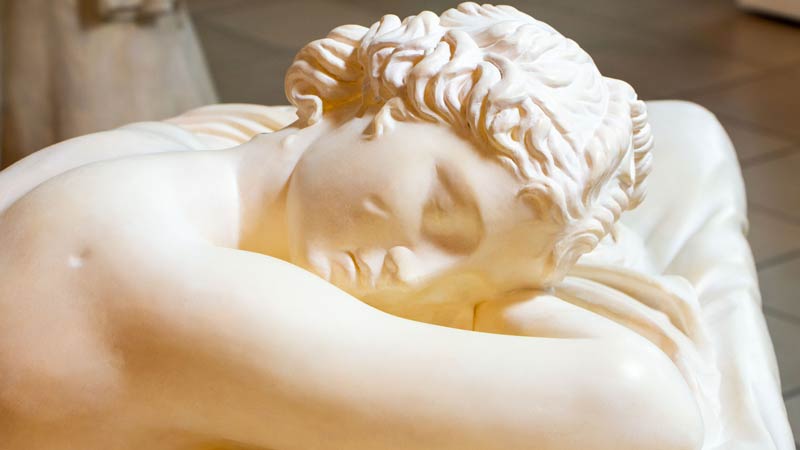Indigenous Student Achievement Pathways marks 10-year anniversary

For the past 10 years, a unique program has welcomed First Nations, Inuit and Métis students to the University of Saskatchewan (USask) College of Arts and Science.
Indigenous Student Achievement Pathways (ISAP) builds confidence, knowledge and skills through academic and social programming offered through a learning community model.
“If I didn’t have ISAP, I don’t think I would have lasted (at university),” said Leanne Harris (BA’22), who studied sociology. “The small-cohort classes were a big help and helped me understand the material more.”
Harris credits ISAP with helping her to succeed as a post-secondary student. She is from Pelican Lake First Nation, and began her studies at USask in 2018 with ISAP.
ISAP—previously known as the Aboriginal Student Achievement Program (ASAP)—connects students with Indigenous faculty members, staff, alumni, Elders and peers. Students benefit from dedicated and culturally responsive instructors; subject-specific tutorials; financial advocacy and bursaries; career preparation support; celebrations and cultural engagement throughout the academic year; and other opportunities.
“Our students—approximately 80 per cent First Nations and 20 per cent Métis each year—are a cohort that have been strongly affected by the residential school legacy,” said ISAP team lead Dr. Sandy Bonny. She considers ISAP programming “a direct and vital response” to the Truth and Reconciliation Commission of Canada’s calls to address educational and employment gaps between Indigenous and non-Indigenous Canadians.
College of Arts and Science appoints new dean

Dr. Brooke Milne, a professor in the Department of Anthropology at the University of Alberta, has been appointed dean of the College of Arts and Science at USask. Milne will begin a five-year term on Aug. 1, 2023.
“I am honoured and excited to be taking on this role to lead the largest, most diverse College of Arts and Science in Western Canada, which is renowned for its excellence in interdisciplinary teaching and research, and where students are engaging in transformative learning opportunities to tackle the world’s wicked problems, showing us that the University of Saskatchewan is truly the university the world needs,” said Milne.
An anthropological archaeologist, Milne has spent nearly three decades applying interdisciplinary approaches to explore the long-term human occupation of the Canadian Arctic. She has a proven track record of successful academic leadership at the University of Manitoba and the University of Alberta.
At the University of Manitoba, Milne served as graduate chair in the Department of Anthropology and as associate dean (social sciences and humanities) in the Faculty of Graduate Studies. She later moved to the University of Alberta and served as vice-provost and dean of the Faculty of Graduate Studies and Research.
Milne earned her PhD in anthropology from McMaster University. She holds a Master of Arts degree from Trent University and a Bachelor of Arts (Honours) degree from the University of Waterloo.
Dr. Peta Bonham-Smith, the current dean of the College of Arts and Science, will conclude her term on June 30 after eight years in the position and will return to her research and teaching role in the Department of Biology. Dr. Bram Noble, the College of Arts and Science’s vice-dean research, scholarly and artistic work, will serve as interim dean starting on July 1.
Remembering a USask computing pioneer

Several of the innovations that made the Information Age possible can be traced to a founding member of USask’s computer science department.
The passing of Dr. Kathleen Booth at the age of 100 in fall 2022 brought renewed attention from around the world to her achievements. From 1962–72, Booth was a researcher and later a faculty member in the College of Arts and Science.
While working in the United Kingdom in the 1940s and 50s, Booth was the first to invent assembly language and wrote one of the first books on programming. With her husband, Dr. Andrew Booth, she helped create an algorithm—Booth’s multiplier—that is fundamental to billions of computer processors today.
The Booths were cofounders of the Department of Numerical Automation at the University of London’s Birkbeck College, which is thought to be the world’s first university computer science department.
In the early 1960s, the couple moved to Saskatchewan to take up positions at USask. Booth was director of a National Research Council project investigating computer translation between French and English. She taught courses on programming and information storage, and helped develop the original curriculum of what is now called the Department of Computer Science.
“They had offers from all over the world—many in the United States, New Zealand, etc.—but settled on Saskatchewan because Canada, and USask in particular, was at the forefront of scientific support and innovation,” said the Booths’ daughter, Dr. Amanda Booth (DVM’83, MVetSc’86).
USask expanding biology program at Prince Albert campus

With the purchase of new laboratory equipment, the Prince Albert USask campus is expanding its biology
courses.
The Department of Biology at the College of Arts and Science purchased the equipment for BIOL 224, “Animal Body Systems,” a basic physiology course. Lab work in the course requires students to use the equipment to monitor body responses to activities such as exercise and a simulated diving experience.
Before the Prince Albert campus opened in 2020, USask classes shared classroom and laboratory space with Saskatchewan Polytechnic, formerly known as SIAST, for decades. Time with laboratory equipment was limited to accommodate other classes.
Expanding the biology program will allow students to stay and study longer in Prince Albert. The biology department hopes to continue expanding its programming and eventually offer the first two years of a biology degree at the Prince Albert campus.
“There are a lot of students who want to learn close to home and we want to provide the opportunity to take classes that will make a meaningful contribution towards a science degree," said department head Dr. Christopher Todd.
Stone used on campus buildings given global heritage status

Tyndall Stone—a recognizable feature of many USask campus buildings—has achieved an international status that could promote the stone and help conservation efforts.
Department of Geological Sciences faculty member Dr. Brian Pratt led the process of nominating the stone for the status of Global Heritage Stone Resource from the International Union of Geological Sciences (IUGS).
Tyndall Stone is a light grey- to cream-coloured limestone that has a mottled appearance and abundant visible fossils. The embedded fossils include organisms such as corals, sponges, giant cephalopods and snails.
The stone has been used in many notable buildings throughout the 20th century such as the Parliament Buildings in Ottawa; the Canadian Museum of History in Gatineau, Que.; and the Legislative Buildings in Regina, Sask. and Winnipeg, Man. Tyndall Stone was sourced only from a quarry in Garson, Man., located northeast of Winnipeg.
As the first Canadian stone to achieve Global Heritage Stone Resource status and be ratified as an IUGS Heritage Stone, Tyndall Stone is now part of a list of culturally significant building stones. The status will help increase knowledge of the stone and encourage preservation, since its quarry is exhausted.
USask researchers co-lead climate science satellite mission

Two College of Arts and Science researchers are leaders of a national team developing three new climate science satellite instruments that will be launched into space as part of a large NASA satellite mission.
Department of Physics and Engineering Physics professors Drs. Adam Bourassa (BE’01, BSc’01, MSc’04, PhD’07) and Doug Degenstein (BSc’89, BE’93, PhD’99) are key in the creation of two satellite instruments focused on aerosol and water vapour measurements. Both professors are part of USask’s Institute of Space and Atmospheric Studies.
The instruments, named SHOW (Spatial Heterodyne Observations of Water) and ALI (Aerosol Limb Imager), will be developed at USask.
Thirteen universities from across Canada are participating in the project, titled HAWC (High-altitude Aerosols, Water Vapour and Clouds). The Canadian Space Agency, Environment and Climate Change Canada, the National Research Council of Canada, and several Canadian aerospace companies are also contributing.
Data collected from the satellites will provide critical information for predicting extreme weather in Canada, and improve prediction models of the impact of climate change.
Honouring COVID-19 victims

As the number of people who died from COVID-19 grew, individual tragedies were converted into statistics. The Remember Rebuild Saskatchewan team at USask is working to help Saskatchewan remember the lives lost.
The team has created a memorial website called Remember Lives Not Numbers that identifies more than 100 people whose families listed COVID-19 as the cause of death. Each person’s information was collected from news stories and obituaries, and includes a brief highlight about their life as reported by family members and friends.
The team behind the digital memorial includes Department of History faculty members Dr. Jim Clifford and Dr. Erika Dyck (BA’98, MA’00); research officer Dr. Patrick Chassé (PhD’18); graduate student Bethany Knowles and undergraduate research assistant Domenica Medina Sanchez.
“I am one of many Saskatchewan residents who lost friends during COVID-19 and could not attend a memorial service or grieve with friends to honour their passing,” said Dyck. “I hope this site also helps us collectively grieve the losses of our friends and family as we look back at three years of pandemic conditions.”
View the memorial or submit a name at www.rememberrebuild.ca.
Research finds insecticides impair a bee’s ability to move in a straight line

Recent research in the College of Arts and Science has found that insecticides, even at less-than-lethal amounts, impair a honeybee’s ability to move in a straight line. Former doctoral student Dr. Rachel Parkinson (BSc’15, PhD’19), under the supervision of biology professor Dr. Jack Gray, conducted the experiments.
Bees were tethered above an air-supported ball, creating a bee-sized treadmill. The mechanism was set up in front of screens that showed moving vertical lines to mimic movement in a real environment. The bee’s walking path on the ball was recorded. The experiments found that a bee’s ability to encode and respond to visual information is impaired by the insecticides sulfoxaflor and imidacloprid.
The research—published in Frontiers in Insect Science—showed that exposure to insecticides led to increased cell death in the brains of the bees and impacted a gene expression in the central nervous system involved in detoxification.
“The major concern is that, if bees are unable to overcome any impairment while flying, there could be profound negative effects on their ability to forage, navigate, and pollinate wildflowers and crops,” said Parkinson.
Sustainability of mountain water sources focus of new UNESCO Chair

Department of Geography and Planning faculty members Drs. John Pomeroy (BSc’83, PhD’88) and Corinne Schuster-Wallace are co-chairs of a new UNESCO position focused on preserving critical mountain water sources endangered by climate change.
Nearly four billion people worldwide depend on water from the high mountains for survival. The UNESCO Chair in Mountain Water Sustainability will address the challenges of sustaining and managing mountain water sources such as the Canadian Rockies snowpacks and glaciers.
“Chairholders will have to find the regionally appropriate and problem-specific solutions and be sure not to force a one-solution-fits-all approach, but to listen to local needs and to codevelop the most appropriate solutions in each of the regions,” said Pomeroy.
The UNESCO position is hosted at the University of Calgary and held by a total of six chairholders from Western Canada, Chile and Nepal. Each scholar brings a distinct research focus from their geographic region. Chairholders will proactively work with local mountain-based communities and relevant stakeholders and decision-makers.
Medieval monks’ moon-watching sheds light on volcanoes and climate change

An international research team that includes a College of Arts and Science physicist has developed a deeper understanding of volcanoes and climate change thanks to medieval-era records created by monks.
The researchers examined astronomical records written by monks and chroniclers across Europe, the Middle East and Asia from 1100-1300 CE. The monks described 51 lunar eclipses that occurred in Europe during the period, noting that five were especially dark—something that can occur when dust from major volcanic eruptions is present.
When volcanoes erupt, ash and sulfur is released into the atmosphere, resulting in a haze that can decrease the intensity of the sun and reduce global temperatures over a period of years.
Dr. Matthew Toohey, assistant professor in the Department of Physics and Engineering Physics, is part of the interdisciplinary research team that published its findings in the journal Nature in April 2023. His role focused on translating eclipse records into estimates of when the volcanic eruptions took place.
“The more accurately we can estimate the magnitude and timing of past eruptions, the better we can understand past climate variations and use that to test climate models that are used to predict future climate,” said Toohey.
Making the stage more inclusive through design

USask Department of Drama head Carla Orosz (BFA’04) and her team are building a free and accessible resource to guide theatre designers in creating inclusive sets, costumes, makeup, scenery, projection and lighting.
“Until relatively recently, the Canadian professional theatrical design field and the training that supports emerging designers has historically had limited opportunities to work with diverse casts due to embedded biases in the industry,” said Orosz.
“‘Why can’t we see their faces?’ is a familiar refrain from many directors due to poor contrast in the colour palette in relation to skin colours.”
Orosz is working with professional theatre designers to develop web-based resources for theatre training institutions and the theatre community to “train the eye” in developing colour palettes for diverse skin colours. The study uses a Department of Drama studio theatre as a laboratory to collect data about the staging elements necessary to create colour palettes that complement diverse actors.
Orosz is also working with the Gordon Tootoosis Nīkānīwin Theatre, the only Indigenous theatre company in Saskatchewan, to engage Indigenous artists and youth with the development and outcomes of the project.
USask awards inaugural ohpinamake Indigenous art prize

Winnipeg-based artist KC Adams is the inaugural recipient of ohpinamake, a new donor-funded prize for Indigenous artists from the USask Art Galleries and Collection.
Adams, an Anishinaabe, Inninew and British artist, was selected by a jury of cultural workers and community members to receive the first $10,000 award. Adams refers to herself as a “social practice artist,” noting community and mentorship are important aspects of her work. As she builds her artistic career, she is showing Indigenous students “that this is possible for their future,” she said.
The word ohpinamake is a nêhiyawêwin (Cree) term meaning “to lift others.” The name was gifted to the USask Art Galleries and Collection by a group of three Indigenous community leaders: Elder Maria Campbell, Elder Louise Bernice Halfe – Sky Dancer and artist Ruth Cuthand (BFA’83, MFA’92).
Six other artists—Holly Aubichon, Darren Gowan, Laura Grier, Audie Murray, Taryn Walker and Brody Burns (BA’21)—were selected to receive $1,000. The prizes were made possible thanks to the generosity of donors Jim and Marian Knock.
Museum of Antiquities acquires replica Sleeping Hermaphrodite

The Museum of Antiquities at USask has obtained a 3D-printed replica of the Sleeping Hermaphrodite—a famous Roman sculpture located in the Louvre in Paris, France.
The full-sized replica, which is made of resin and painted to look like marble, was created by Ateliers d’art de la Réunion des musées nationaux – Grand Palais in France. It is the first 3D-printed replica of the statue ever produced by the Ateliers.
“The Sleeping Hermaphrodite has been at the top of the museum’s acquisitions wish list for several years,” said Dr. Tracene Harvey (BA’98, MA’02), the museum’s director/curator. “This acquisition helps to fill one of the gaps in the museum’s collection, namely sexuality and gender in ancient Greek and Roman art.”
Sleeping Hermaphrodite is now part of more than 120 replica sculptures in the museum’s collection, the vast majority of which have been funded by donations. The purchase of the Sleeping Hermaphrodite replica was made possible by a $25,000 gift from the estate of Cleo Girgulis.
Visit artsandscience.usask.ca/news for the latest news and events.
